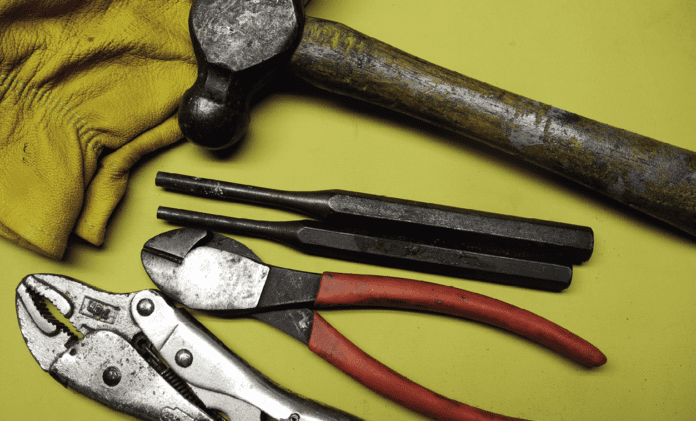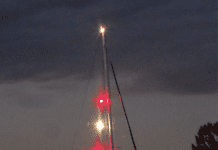Rigging problems at sea are like broken shoelaces. Ideally, replacement is in order, but in reality a knot might be the right short-term solution. The following tools and techniques offer better-than-a-knot solutions to rig emergencies, a jury rig that should suffice until you can make more permanent repairs that restore the rig’s integrity.
1. A variety of hand tools are immediately helpful for clearing rigging: vise-grip pliers for pulling clevis pins or cotter pins, wire-cutters for clipping cotter pins or circlips, steel punches for punching out clevis pins, and a peen hammer for driving punches. These should be added to the cruising tool kit described by veteran cruiser and circumnavigator Evans Starzinger in our 2007 report (see “Tool Tips,” Practical Sailor March 2007).
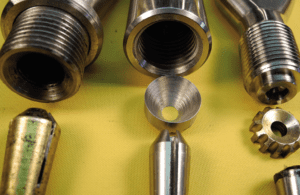
2. Stainless-steel mechanical terminals by Hayn, StaLok and Norseman (no longer in business) can also be used to mend a broken shroud or create a new one. If the break is near the original deck-level terminal (a common failure), a long stud terminal might be enough to temporarily bridge the gap. Mating terminals, and/or a wire-to-wire connector can also be used in combinations to fix a break. A clean cut with all the strands intact is essential (see “Screw-on Rigging Terminals,” and “Step-by-step Threaded Terminal Fittings,” PS June 2015). Assembling screw-on terminals calls for a vise and a stable workplace, making other, simpler, methods better suited for jury rigging at sea.
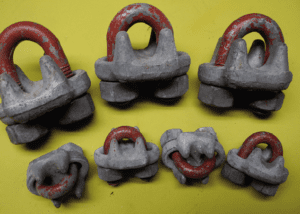
3. For quick and easy connections, industrial riggers love Crosby G450 Forged Wire Rope Clips. Comprising a forged saddle and a hardened U-bolt, these galvanized steel clamps are sized according to wire diameter. They are handy for making a long splice in 1×19 stainless-steel wire, and for making eye-splices and long splices in 7×7 or 7×19 wire. Tightened by wrench, these clamps allow the crew to join and re-use pieces of broken shrouds. Reusable, the rugged clamps recall Crosby’s reliable G209A galvanized bow shackle (see “Anchor Shackles, the $15 Insurance Policy,” PS August 2015).
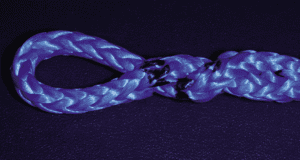
4. Great strides have been made in creating ultra-low stretch, high-modulus cordage. Some of the hollow-core, 12-strand versions of Dyneema and other HMPE (high molecular weight polyethylene) cordage are both easy and quick to eye-splice. With practice and very few tools, anyone can learn to create strong, HMPE shrouds required to turn a mast stump and spinnaker pole into a jury-rig mast (see “Working with High Tech Ropes,” PS December 2019).
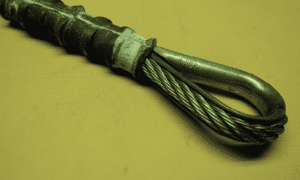
5. On smaller vessels, Nicopress and other copper-sleeve type compression fittings can create a tidy repair. These fittings work well with flexible 7×7 stainless-steel wire bent around form-retaining thimbles. You’ll need a double-handle, rotary, or jaw-type cutter that evenly cuts small-strand wire without unraveling. Two compression sleeves are used to lock the wire and thimble in place. A manual crimp tool delivers the compression.
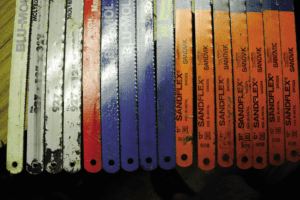
6. Several sharp hacksaw blades come in handy. High quality 18-tooth-per-inch (TPI) blades will cut standing rigging but it’s laborious, and can chew up blades. Have a range of TPI. Using 32 TPI blades to cut tensioned wire, our testers needed 20 seconds to cut 3/16” 7×19 wire and 40 seconds to cut 1/4” 1×19 wire. On loose 1 x 19 wire, we used sharp wire cutters were needed to cut the final strands (see “Emergency Rigging Cutters,” PS November 2001).

7. A metal cutting wheel on a battery-powered rotary cutter creates a clean cut, but take care to firmly secure the wire end and wear personal protection while cutting.
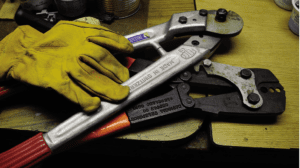
8. On larger boats with room for them, a set of Swiss-made Felco wirecutters (highly rated in PS testing) and a Nicropress crimper enable all manner of jury rig options using wire rope.

9. Whatever cutting device you use, you will want to have eye-protection. If you require corrective eyewear, be sure to choose goggles that fit over your glasses.



































